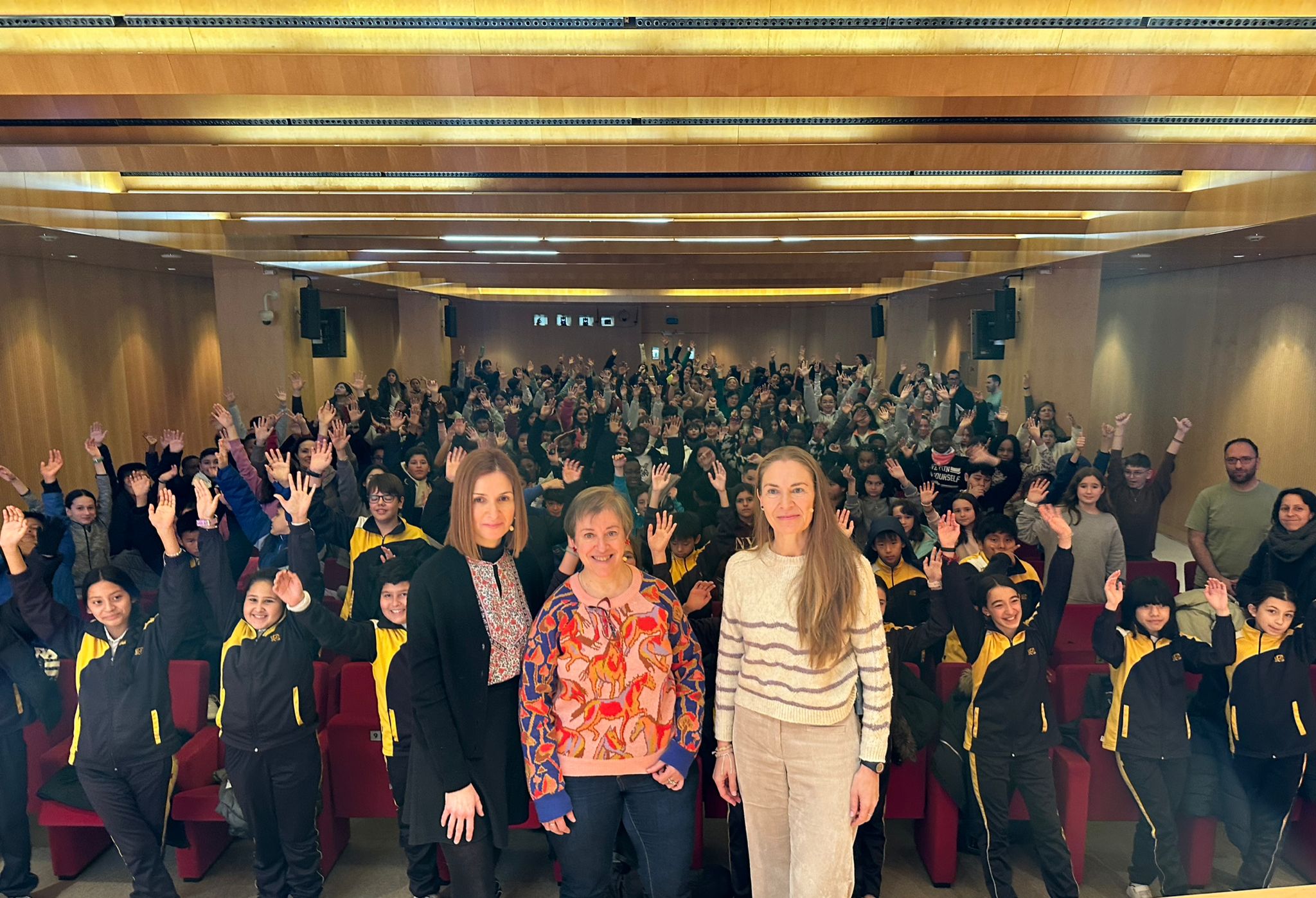(Zaragoza. Wednesday, February 12, 2025). A total of 1,004 students attended two roundtable discussions organized by the University of Zaragoza, in collaboration with the Fundación Ibercaja Patio de la Infanta, to commemorate the International Day of Women and Girls in Science. The event was held both in person and online, reaching students from across the entire Aragon region.
Under the title “Converse with Our Female Scientists,” the sessions featured 7 researchers from the campaign “I Am a Scientist. I Live in Your Neighborhood,” who shared their passion and work with the students. The day was divided into two roundtable discussions: the first, aimed at sixth-grade Primary students (from 10:00 to 11:15 a.m.), and the second, for Secondary and High School students (from 12:00 to 1:15 p.m.).
In the first in-person roundtable, the scientists María Ángeles Latorre, agronomist at the Aragon Institute of Agri-food Research (IA2, UNIZAR-CITA); Esther Pueyo, mathematician and biomedical engineer at the Institute of Engineering of Aragon (I3A); and Josefina P. Arantegui, chemist at the Institute of Environmental Sciences (IUCA), engaged in discussions with sixth-grade students from schools such as Andrés Manjón, Gascón y Marín, Domingo Miral, Nuestra Señora de la Merced, San Antonio de Padua, Tenerías, and Zaragoza Schoolhouse.
Following that, in the second in-person session, Secondary and High School students from institutions such as Jerónimo Zurita, Nuestra Señora de la Merced, Nuestra Señora del Carmen, San José, San Vicente de Paul, and Zaragoza Schoolhouse participated in a meeting with Beatriz Rubio, mathematician at the Institute of Mathematics and Applications (IUMA); Elena Cerrada, chemist at the Institute of Chemical Synthesis and Homogeneous Catalysis (ISQCH, mixed CSIC-UNIZAR); Marta Martínez, biochemist at the Biocomputation and Complex Systems Physics Institute (BIFI); and Irene Lucas, physicist at the Institute of Nanoscience and Materials of Aragon (INMA, mixed CSIC-UNIZAR).
The online format allowed the meetings to reach different locations in Aragon, including the José María Blecua school in Alcolea de Cinca (Huesca), Juan Lorenzo Palmireno in Alcañiz (Teruel), and Castillo Qadrit in Cadrete (Zaragoza), as well as high schools such as Sobrarbe in Aínsa (Huesca), Leonardo de Chabacier in Calatayud (Zaragoza), and Sierra Palomera in Cella (Teruel).
These roundtable discussions are part of the fifth edition of the “I Am a Scientist. I Live in Your Neighborhood” campaign organized by the University of Zaragoza, which has been taking place since February 10 on Zaragoza’s Gran Vía. Throughout the month, until March 9, the exhibition will provide young girls and adolescents with real-life role models of women in science, helping to highlight their work, reduce the gender gap, and bring science closer to future generations.


